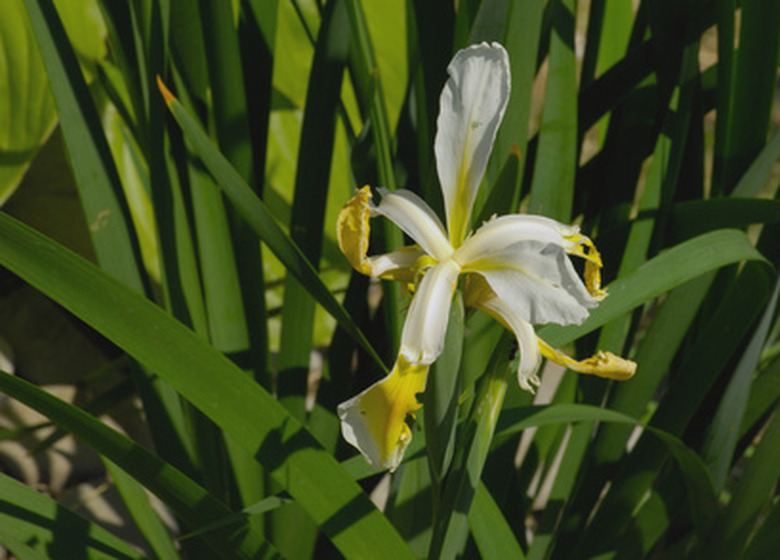Crinum Lily Diseases
The crinum lily is a large, evergreen plant that reaches heights of up to 5 feet with an equivalent spread. This herbaceous perennial develops dark green, strap-like foliage that grows in spiral patterns. The leaves are erect and simple and can reach up to 36 inches in length. The crinum lily produces fragrant and showy white flowers that bloom in a spider-like pattern during various times throughout the year. The crinum lily is relatively resistant to pests but is susceptible to several diseases.
Anthracnose
Anthracnose is a fungal disease that develops on defoliated leaves and twigs that remain in the lily's area throughout the fall and winter months. During the spring months, the fungus is transported by wind and rain onto the leaves of the crinum lily. The infected foliage develops small, tan to dark colored spots that decay with age. Infected foliage will also develop distortions and curl at the edges. Severely infected plants may also experience dieback of flowers and defoliation. Prevent anthracnose by removing debris and defoliated leaves from the area. The disease can also be controlled with copper-based fungicidal treatments that begin in the spring.
- The crinum lily is a large, evergreen plant that reaches heights of up to 5 feet with an equivalent spread.
- The crinum lily produces fragrant and showy white flowers that bloom in a spider-like pattern during various times throughout the year.
Powdery Mildew
Powdery mildew is a fungal disease that infects the surface of the crinum lily's foliage. This cosmetic disease occurs in the early spring after long periods of wet and moist weather. Infected crinum lilies develop small, white to gray colored fungal spots. As the disease progresses, the number of fungal spots increases, causing the spots to coalesce. This progression results in a white covering of fungal mildew on the surface of the infected foliage. Severely infected foliage will begin to show foliage decay, as well as growth stunt, leaf curl and distortion and yellowing of foliage. Wipe the mildew from the foliage with a clean, damp towel. Apply fungicidal treatments at the onset of the disease to prevent permanent injury to the lily's foliage.
- Powdery mildew is a fungal disease that infects the surface of the crinum lily's foliage.
- Apply fungicidal treatments at the onset of the disease to prevent permanent injury to the lily's foliage.
Botrytis Blight
Botrytis blight is a fungal disease that germinates during cool, rainy periods. This disease targets most parts of the crinum lily, including the foliage, stems, flowers, crowns and seedlings of the plant. Infected lilies develop necrotic areas that are displayed with brown-colored, dying tissue. Plants will experience wilting, defoliation and obvious deadened areas. Prune infected areas from the plant to redirect the plant's energy. Chemical treatments are effective for botrytis blight when used when the first symptoms begin to appear. Select a fungicide that is designed specifically for botrytis blight.
- Botrytis blight is a fungal disease that germinates during cool, rainy periods.
- Infected lilies develop necrotic areas that are displayed with brown-colored, dying tissue.
